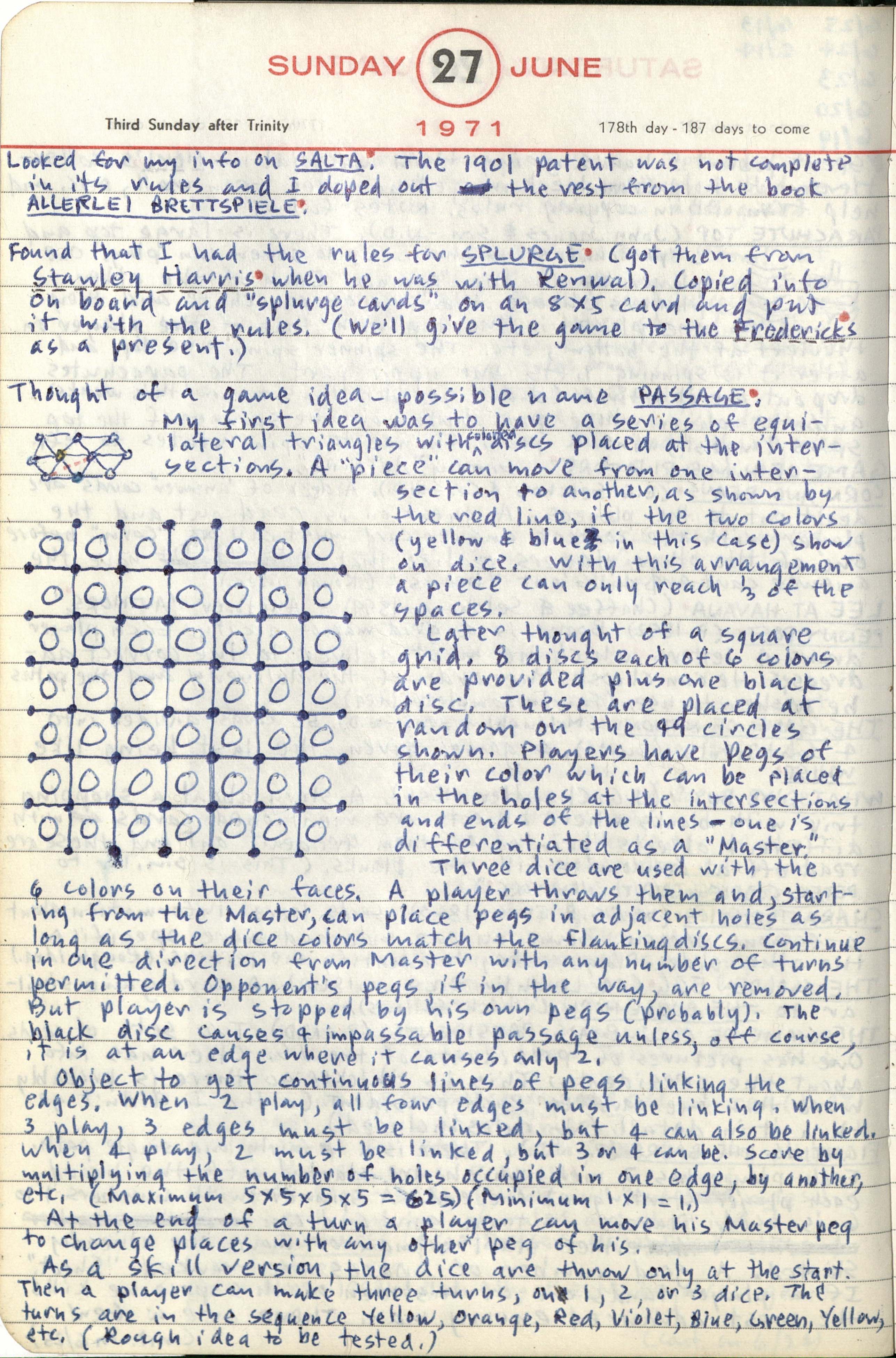1971_Sackson_198_June 27.jpg: Page #1
Original title: 1971_Sackson_198_June 27.jpg

Transcription
SUNDAY 27 JUNE Third Sunday after Trinity 1971 178th day - 187 days to come
Looked for my info on SALTA. The 1901 patent was not complete in its rules and I doped out the rest from the book ALLERLEI BRETTSPIELE.
Found that I had the rules for SPLURGE (got them from Stanley Harris when he was with Renwal). Copied info on board and "splurge cards" on an 8 x 5 card and put it with the rules. (We'll give the game to the Fredericks as a present.)
Thought of a game idea - possible name PASSAGE.
[sketch of three rows of dots connected by equilateral triangles] [sketch to left of paragraph: 7 x7 grid of dots, connected by vertical and horizontal lines; each square containing an open circle] My first idea was to have a series of equi- lateral triangles with colored discs placed at the inter- sections. A "piece" can move from one inter- section to another, as shown by the red line, if the two colors (yellow & blue in this case) show on dice. With this arrangement a piece can only reach 1/3 of the spaces. Later thought of a square grid. 8 discs each of 6 colors are provided plus one black disc. These are place at random on the 49 circles shown. Players have pegs of their color which can be placed in the holes at the intersections and ends of the lines - one is differentiated as a "Master." Three dice are used with the 6 colors on their faces. A player throws them and, start- ing from the Master, can place pegs in adjacent holes as long as the dice colors match the flanking discs. Continue in one direction from Master with any number of turns permitted. Opponent's pegs if in the way, are removed. But player is stopped by his own pegs (probably). The black disc causes 4 impassable passage unless, off coure, it is at an edge where it causes only 2. Object to get continuous lines of pegs linking the edges. When 2 play, all four edges must be linking. When 3 play, 3 edges must be linked, but 4 can also be linked. When 4 play, 2 must be linked, but 3 or 4 can be. Score by multiplying the number of holes occupied in one edge, by another, etc. (Maximum 5×5×5×5=625) (Minimum 1×1=1.) At the end of a turn a player can move his Master peg to change places with any other peg of his. As a skill version, the dice are throw only at the start. Then a player can make three turns, on 1, 2, or 3 dice. The turns are in the sequence Yellow, Orange, Red, Violet, Blue, Green, Yellow, etc. (Rough idea to be tested.)